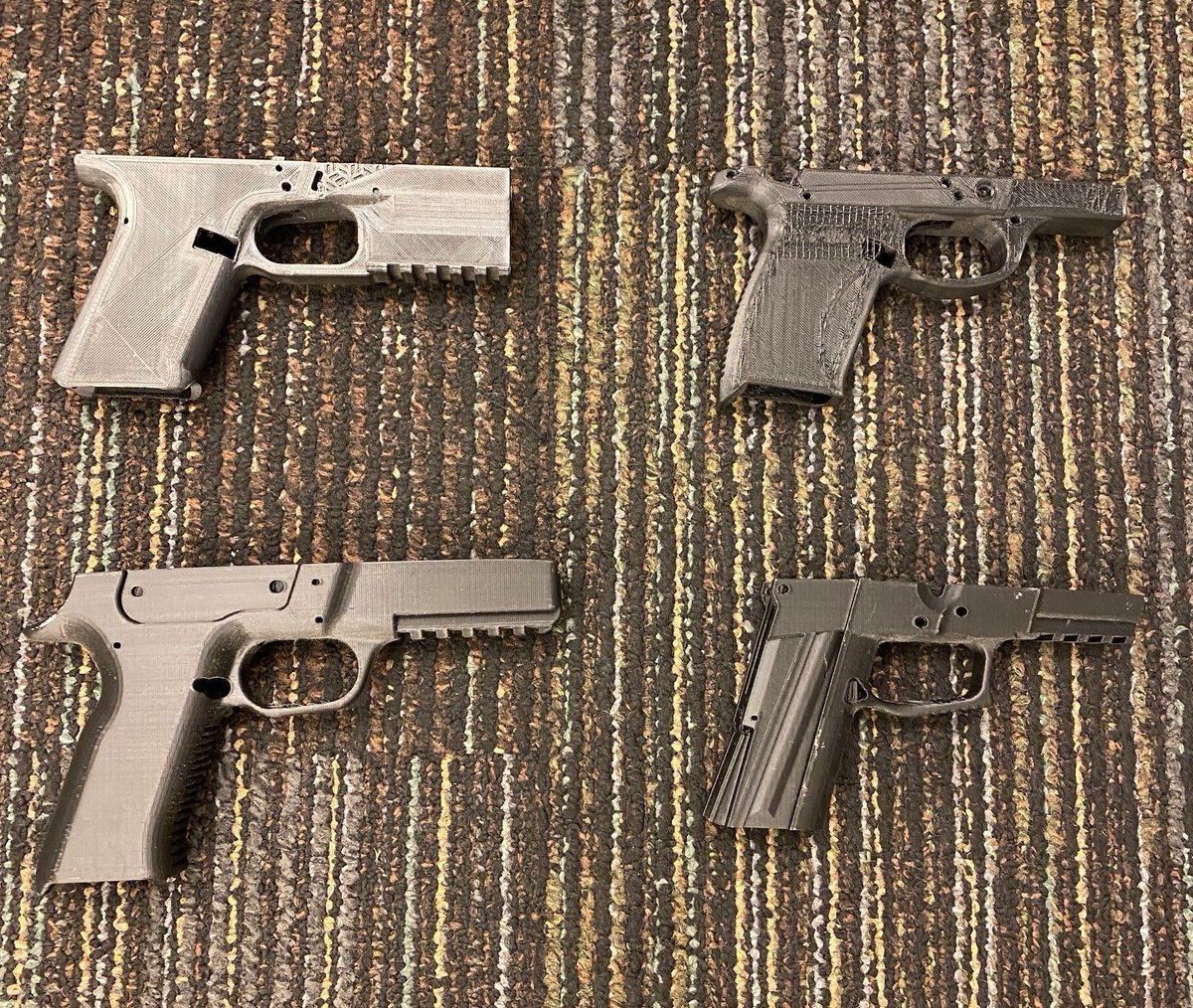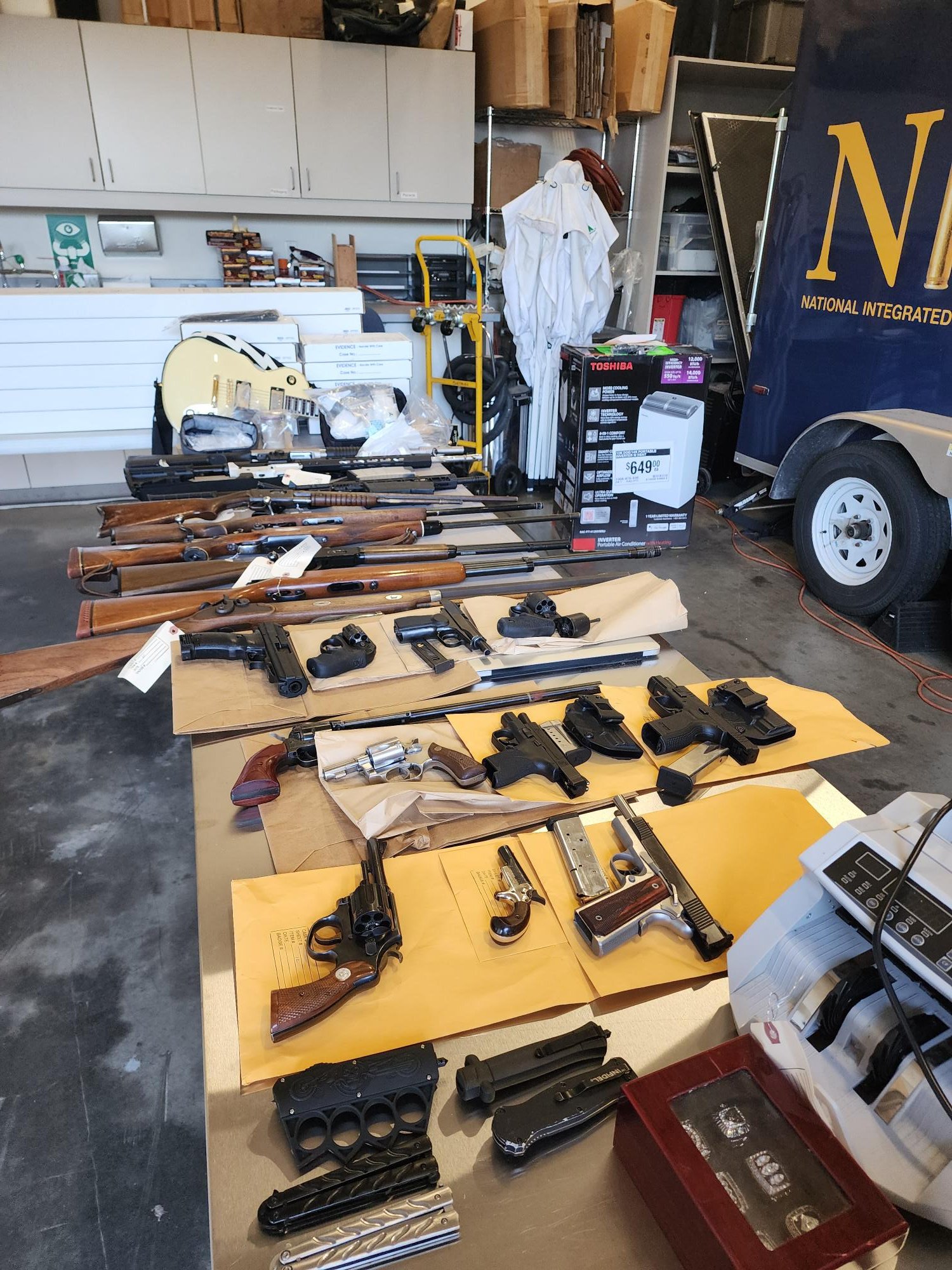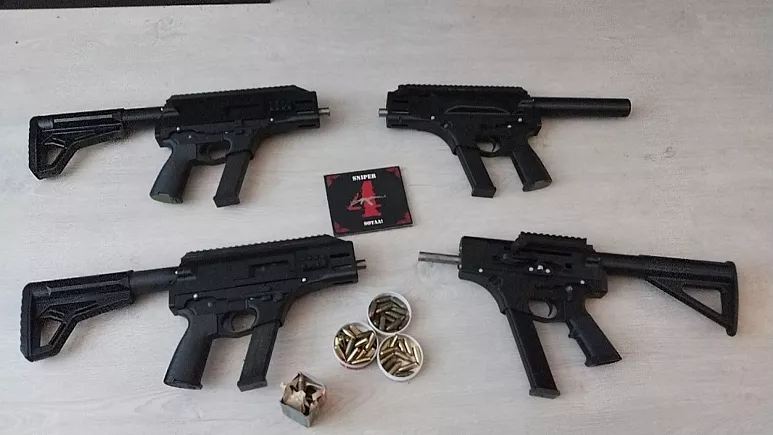As more news stories involving 3D printed firearms emerge, the global conversation intensifies. These recent incidents highlight the widening intersections of technology, personal liberties, and public safety concerns.
In Bellevue, Washington, a man suspected of a drive-by shooting was found with 3D printed ghost guns. Meanwhile, in Eugene, Oregon, a felon’s residence revealed narcotics, stolen property, and a 3D printed component for an AR15 rifle. The legal side remains hotly disputed as a US District Court in Texas recently challenged the definitions of the Bureau of Alcohol, Tobacco, Firearms and Explosives (ATF) related to firearm components, a decision cheered by some but poised for appeal. In Finland, far-right extremist groups have been suspected of harnessing 3D printing to prepare for acts of terror.
Ghost Gun Arrest
On May 27, 2023, a 24-year-old man named Romeo Plummer was apprehended in Bellevue, Washington, suspected of conducting a drive-by shooting. Following an altercation at a gas station, witnesses reported that Plummer fired several shots from a car window, though the exact target remains unclear. An investigation led Bellevue detectives to Plummer’s Seattle residence, where they uncovered four ghost guns, ammunition, a 3D printer, and other incriminating evidence.
Captain Shelby Shearer of the Bellevue Police Department emphasized the dangers of ghost guns, noting: “Ghost guns are unregulated and untraceable. That means more and more are on the streets that nobody knows about. That is extremely dangerous and problematic for law enforcement.”
 Ghost guns seized. Image courtesy of Bellevue Police Department.
Ghost guns seized. Image courtesy of Bellevue Police Department.Jorge Martinez, the alleged target of the drive-by, described the harrowing incident and expressed relief over Plummer’s arrest. Martinez captured the episode on his cell phone, saying that he filmed it to potentially provide his family with crucial information if anything happened to him. “A picture says a thousand words, but a video says everything; a video doesn’t lie,” Martinez remarked to KIRO-TV news station.
Erika Solis-Ibarra, the 21-year-old reportedly driving the car during the incident, was also arrested. Solis-Ibarra and Plummer are now facing drive-by shooting charges, with Plummer being charged with assault.
Arms Bust
Executing a planned operation in Oregon on July 27, the Eugene Police Department’s SWAT, Crisis Negotiation Team, and Street Crimes Unit targeted the residence of Stephen Allan Laszlo, a 41-year-old felon. Suspected of possessing firearms, selling stolen property, and dealing narcotics, Laszlo also reportedly used the proceeds from these illicit activities to operate a makeshift pawn shop and buy property from various individuals. Notably, Laszlo resided in a low-income housing development designed for families with children, although he had no children with him.
During the search, police apprehended Laszlo after he tried to evade arrest by jumping from a second-story window, injuring his ankle. The search of his apartment revealed various illegal items, including firearms, drugs, and stolen goods. Of particular concern was the discovery of a ghost AR15 rifle, which featured a 3D printed lower receiver. The stash also included other firearms with obliterated serial numbers, stolen bicycles, and body armor. Laszlo now faces multiple charges related to controlled substance offenses, firearm theft, firearm possession as a felon, and more.
 Street Crimes Unit, SWAT and CNT serve warrant on felon supplying narcotics and secure large cache of firearms. Image courtesy of Eugene Police Department.
Street Crimes Unit, SWAT and CNT serve warrant on felon supplying narcotics and secure large cache of firearms. Image courtesy of Eugene Police Department.Gun Control Ruling Overturned
In a recent ruling by the US District Court for Northern Texas, Judge Reed O’Connor addressed a polemic rule about the definition of firearm components under the Gun Control Act of 1968. The case, Jennifer VanderStok et al. vs. Blackhawk Manufacturing Group Inc. et al. vs. Merrick Garland et al., revolved around whether the federal government can regulate partially manufactured firearm components, related products, and materials.
Historically, in 1978, the ATF defined the “frame or receiver” of a firearm. This definition was accepted until 2022, when the ATF revised it, also aiming to regulate partial frames and receivers. However, Judge O’Connor ruled against the ATF’s updated definitions, asserting that a component not yet functioning as a “frame or receiver” cannot be defined in that way just because ATF declares it. He criticized the ATF’s reliance on past practices, emphasizing that historical actions don’t necessarily dictate current interpretations of clear statutory terms.
When Judge O’Connor’s ruling came out, an article from the media site reason added that this court decision was well-received by advocates who felt that the ATF had overstepped its jurisdiction. However, the US Department of Justice has already indicated it intends to appeal the ruling, suggesting that this legal battle is far from over. In the broader context, the do-it-yourself (DIY) gun-making community, bolstered by new technologies like 3D printing, has been actively working around such restrictions. Moreover, the demographics of gun ownership have shifted, with a more diverse group of Americans owning guns, potentially influencing future legislative decisions on firearm regulations.
Neo-Nazi Tech Threat
The National Bureau of Investigation (NBI) and local police in Häme in, Finland suspect that four members of a far-right extremist group in Lahti committed an aggravated firearms offense with terrorist intent. This group, known to have strong anti-immigrant views, reportedly used 3D printing to create FGC-9 submachine guns. This is the same weapon being produced in Myanmar by anti-junta rebel groups. It has been suggested that this group believes in using violence to bring an end to democracy quickly. This way of thinking is growing among some extreme right-wing groups.
During their investigation, police found evidence suggesting that the group had been preparing for violent acts, explicitly targeting individuals based on skin color, political affiliations, or other ideological perspectives. The group also contemplated strikes on infrastructure, such as the power grid and railways. Detective Inspector Tuomas Kuure shared that terms like “siege,” “incitement,” and “race war” were frequent in the group’s communications, all terms associated with accelerationist thinking (the idea of hastening societal collapse to rebuild from scratch). In their findings, authorities seized multiple 3D printed firearms, related components, and a significant amount of ammunition. Other items like cannabis plants and a variety of weapons were also discovered.
 Some of the weapons police believe the suspects made using a 3D printer. Image courtesy of Finland Police.
Some of the weapons police believe the suspects made using a 3D printer. Image courtesy of Finland Police.In a separate case, another far-right group based in Kankaanpää has come under police scrutiny, marking the first time a far-right entity has been charged in Finland. While both groups seem to share accelerationist views, no direct connection between them has been confirmed. The Lahti group members have been linked to other extremist organizations and events. All four suspects were found to have been involved in the 3D weapons creation process. Some of these individuals have previous criminal records and links to notorious far-right incidents, highlighting a pattern of extremist behavior in their histories.
Subscribe to Our Email Newsletter
Stay up-to-date on all the latest news from the 3D printing industry and receive information and offers from third party vendors.
You May Also Like
Further Understanding of 3D Printing Design at ADDITIV Design World
ADDITIV is back once again! This time, the virtual platform for additive manufacturing will be holding the first-ever edition of ADDITIV Design World on May 23rd from 9:00 AM –...
3D Printer Maker EVO-tech Reborn as NEVO3D — Once More With Feeling
EVO-tech was a 3D printing service and original equipment manufacturer established in 2013 and based in Schörfling am Attersee, Austria. The company produced high-quality material extrusion systems featuring linear bearings,...
3D Systems Brings 3D Printed PEEK Cranial Implant to the U.S. with FDA Clearance
For more than 10 years, 3D Systems (NYSE:DDD) has worked hand-in-hand with surgeons to plan over 150,000 patient-specific cases, and develop more than two million instruments and implants from its...
CDFAM Returns to Berlin for Second Annual Symposium
The second CDFAM Computational Design Symposium is scheduled for May 7-8, 2024, in Berlin, and will convene leading experts in computational design across all scales. Building upon the first event...































